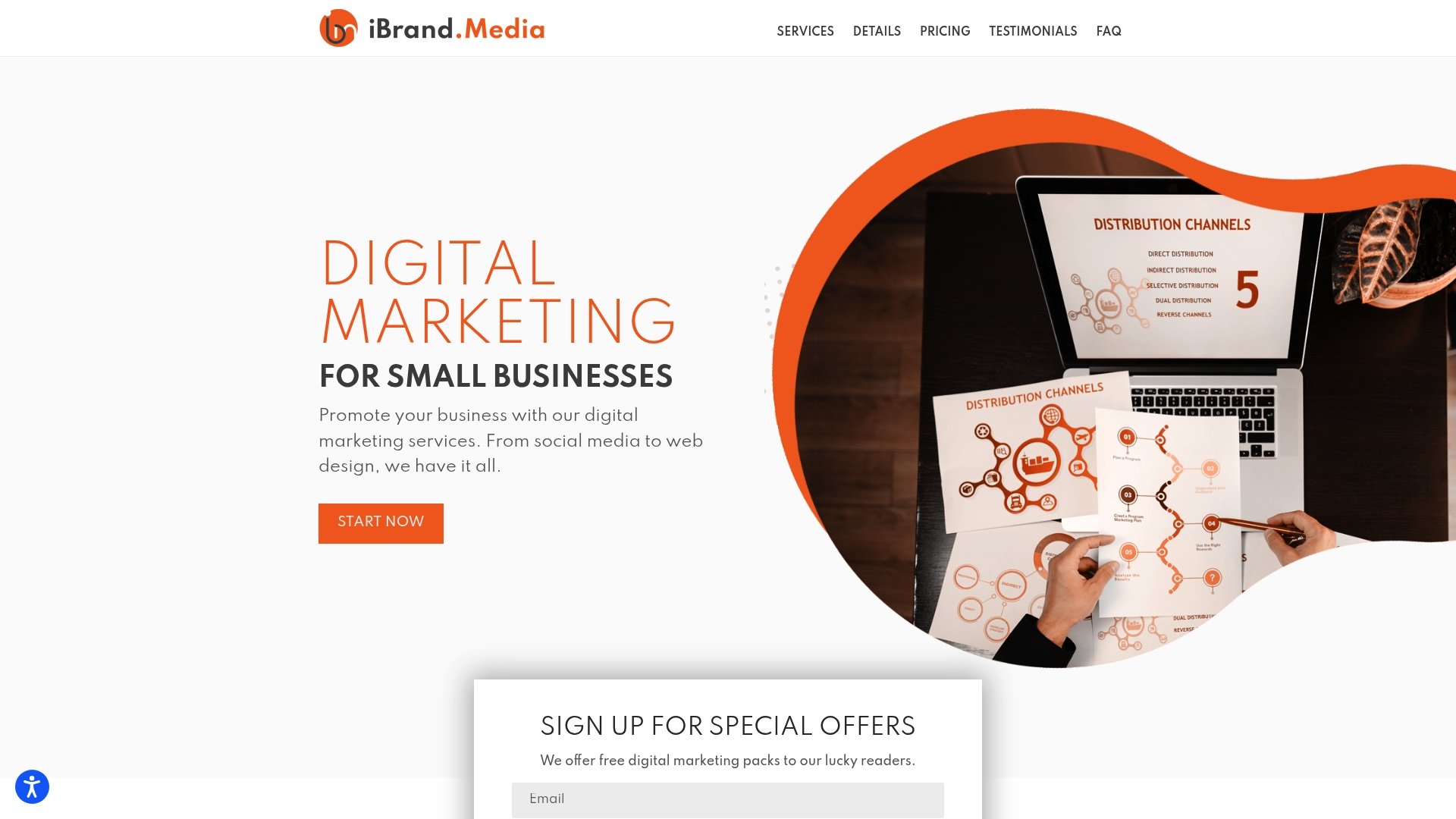Every business wants more qualified leads, yet most efforts fall flat because they miss one core principle. Research shows that websites optimized for lead generation can increase conversion rates by up to 200 percent. That number sounds massive, right? Most people assume it takes a complete overhaul or a huge budget to see improvements. In reality, a few simple steps can reshape how you attract and convert leads starting today.
Table of Contents
- Step 1: Identify Your Target Audience
- Step 2: Optimize Your Online Presence
- Step 3: Create Engaging Content
- Step 4: Implement Lead Generation Strategies
- Step 5: Monitor and Analyze Your Results
Quick Summary
| Key Point | Explanation |
|---|---|
| 1. Identify Your Target Audience | Understand detailed characteristics of potential customers beyond demographics to enhance engagement. |
| 2. Optimize Your Online Presence | Ensure consistent branding and usability across digital platforms to attract leads effectively. |
| 3. Create Engaging Content | Develop valuable content addressing customer needs that build credibility and attract interest. |
| 4. Implement Lead Generation Strategies | Use targeted approaches to create multiple touchpoints that guide interested prospects towards conversion. |
| 5. Monitor and Analyze Your Results | Regularly track performance metrics to refine strategies based on data-driven insights for continuous improvement. |
Step 1: Identify Your Target Audience
Successful lead generation starts with understanding exactly who will most likely purchase your products or services. Identifying your target audience isn’t just about demographics—it’s about creating a detailed profile of potential customers who are genuinely interested in what you offer.
Begin by examining your current customer base and analyzing their key characteristics. Look beyond basic age and location data. Dig deeper into their professional backgrounds, pain points, purchasing behaviors, and specific challenges your business can solve. This process requires a strategic approach that combines data analysis with empathetic understanding.
Utilize multiple research methods to build a comprehensive audience profile. Customer surveys, website analytics, and social media insights provide rich information about your potential leads. Google Analytics can reveal demographic details, while platforms like Facebook Audience Insights offer granular data about user interests and behaviors. Learn more about targeted marketing strategies that help pinpoint precise audience segments.
Consider creating multiple customer personas representing different segments of your potential market. Each persona should include specific details like job title, income range, primary challenges, and preferred communication channels. For example, a home service business might have personas like “Budget-Conscious Homeowner” or “Property Management Professional” that help tailor marketing messages more effectively.
To verify you’ve successfully identified your target audience, check if you can answer these key questions about your ideal customer:
- What specific problems does your product or service solve?
- Where do these potential customers typically spend their time online?
- What motivates them to make a purchasing decision?
- What are their biggest hesitations or concerns?
Remember that target audience identification is an ongoing process. Markets evolve, and so do customer needs. Regularly review and update your audience profiles to ensure your lead generation strategies remain relevant and effective.
Step 2: Optimize Your Online Presence
Online presence is your digital storefront, and in 2025, it’s more critical than ever for attracting potential leads. Your digital footprint directly influences how customers perceive and interact with your business. This optimization process goes beyond having a simple website—it requires strategic positioning across multiple digital platforms to maximize visibility and credibility.
Start by conducting a comprehensive digital audit of your current online assets. Examine your website, social media profiles, and business listings to ensure consistent branding, accurate contact information, and professional presentation. Explore comprehensive online presence strategies that can transform your digital representation.
Website optimization becomes your foundational element. Ensure your site loads quickly, is mobile responsive, and provides clear pathways for potential customers to engage with your business. Implement clean, intuitive navigation that guides visitors toward taking action—whether that means scheduling a consultation, making a purchase, or requesting more information. Professional imagery, concise messaging, and strategically placed call-to-action buttons can significantly increase conversion rates.
Search engine optimization (SEO) plays a crucial role in expanding your digital reach. Research and integrate relevant keywords naturally into your website content, meta descriptions, and page titles. Tools like Google Search Console can help you understand which search terms potential customers use when looking for services like yours. Focus on local SEO techniques if you’re targeting a specific geographic area, which includes optimizing your Google Business Profile and maintaining consistent business information across online directories.
Verify your online presence optimization by checking these key indicators:
- Your website appears on the first page of Google search results for relevant keywords
- All online business listings have identical contact and location information
- Your website demonstrates clear value proposition within the first few seconds of landing
- You have active, professionally managed social media profiles connected to your primary website
Remember that online presence is an ongoing process. Regular updates, fresh content, and responsive engagement with your digital audience will continuously improve your lead generation potential.
Here is a checklist to help you verify whether you have successfully optimized your online presence for lead generation.
| Optimization Task | Verification Criteria | Complete (Y/N) |
|---|---|---|
| Website loads quickly | Pages load within 3 seconds on desktop and mobile | |
| Mobile responsiveness | Website displays and functions correctly on smartphones | |
| Consistent branding | Same logos, colors, and messaging across all platforms | |
| Accurate business listings | Contact info and location match on all directories | |
| First-page Google ranking | Website appears for relevant keywords in search | |
| Active social media profiles | Profiles are updated, connected to primary website |
Step 3: Create Engaging Content
Engaging content serves as the bridge between your business and potential leads, transforming casual browsers into interested prospects. Content isn’t just about selling—it’s about providing genuine value that solves real problems for your target audience. Your goal is to create materials that not only attract attention but also establish your credibility and expertise.
Start by mapping content directly to the needs and pain points you identified in your target audience research. This means developing resources that speak directly to the challenges your potential customers face. Discover advanced content strategies that can significantly improve your lead generation efforts.
Diversify your content approach to capture different audience preferences. Some potential customers prefer visual learning through infographics and videos, while others appreciate in-depth written guides or quick, actionable blog posts. Consider creating a mix of content types that include tutorial videos, detailed how-to guides, case studies showcasing real customer success stories, and short social media posts that provide quick insights.
Quality trumps quantity in content creation. Each piece should be meticulously crafted with clear, concise language that addresses specific customer questions or challenges. Use storytelling techniques that make technical information accessible and engaging. For instance, instead of listing dry statistics about your service, share a narrative about how your solution transformed a customer’s business or solved a complex problem.
Utilize free and affordable tools to enhance your content production. Platforms like Canva can help create professional graphics, while tools like Grammarly ensure your writing remains polished and error-free. Consider repurposing content across multiple channels—a detailed blog post can become several social media snippets, an infographic, or even a short video tutorial.
This table summarizes key tools and resources mentioned for successful content creation and data analysis throughout the guide.
| Tool/Platform | Primary Purpose | Step Reference |
|---|---|---|
| Google Analytics | Analyze website and content performance | Steps 1, 5 |
| Facebook Audience Insights | Research detailed target audience characteristics | Step 1 |
| Google Search Console | Understand keywords and track site visibility | Steps 2, 5 |
| Canva | Create professional graphics and visuals | Step 3 |
| Grammarly | Ensure error-free, polished writing | Step 3 |
| Email Marketing Platforms | Nurture leads through automated sequences | Step 4 |

Verify the effectiveness of your content strategy by monitoring these key indicators:
- Average time visitors spend reading your content
- Number of social media shares and comments
- Organic traffic growth to your content pages
- Conversion rates from content-driven landing pages
Remember that content marketing is a marathon, not a sprint. Consistently producing valuable, targeted content builds trust and positions your business as an industry authority. Stay patient, track your results, and continually refine your approach based on audience engagement and feedback.
Step 4: Implement Lead Generation Strategies
Lead generation transforms interested prospects into potential customers through strategic, targeted approaches. Your goal is to create multiple touchpoints that guide potential customers through a seamless journey from initial interest to committed lead. This process requires a multifaceted strategy that combines digital marketing techniques with personalized engagement.
Discover advanced website lead generation techniques that can dramatically improve your conversion rates. Begin by implementing lead magnets—valuable resources offered in exchange for contact information. These might include comprehensive guides, free consultations, exclusive webinars, or industry-specific toolkits that provide genuine value to your target audience. The key is creating offerings so compelling that potential leads willingly share their contact details.
Digital advertising platforms offer precise targeting capabilities that can significantly enhance lead generation efforts. Utilize platforms like Google Ads and Facebook Ads to create highly specific campaigns reaching your exact audience demographics. Develop multiple ad variations to test different messaging, images, and call-to-action statements. Implement retargeting strategies that keep your brand visible to potential leads who have previously interacted with your online content.
Email marketing remains a powerful lead generation tool when executed strategically. Develop automated email sequences that nurture potential leads through personalized, value-driven content. Segment your email lists based on specific interests, behaviors, and engagement levels to ensure each communication feels tailored and relevant. Use compelling subject lines and provide clear, easy-to-follow pathways for recipients to learn more about your offerings.
Verify the effectiveness of your lead generation strategies by monitoring these critical metrics:
- Conversion rates from initial contact to qualified lead
- Cost per lead across different marketing channels
- Engagement rates with lead magnet content
- Number of scheduled consultations or product demonstrations
Remember that successful lead generation is an iterative process. Continuously analyze your results, experiment with different approaches, and remain adaptable. What works today might require refinement tomorrow. Track your performance meticulously, be willing to pivot your strategies, and maintain a customer-centric approach that prioritizes providing genuine value at every interaction point.
Step 5: Monitor and Analyze Your Results
Monitoring and analyzing your lead generation results transforms raw data into actionable insights that drive continuous improvement. This step is about understanding not just what happened, but why it happened and how you can optimize your future strategies. Data becomes your strategic compass, guiding decisions and revealing opportunities for growth.
Implement comprehensive tracking tools that provide granular insights into your lead generation performance. Google Analytics, Google Search Console, and platform-specific analytics from social media and email marketing services offer robust data collection. Learn advanced techniques for digital performance tracking to maximize your analytical capabilities.
Establish a consistent reporting rhythm that allows for meaningful analysis. Weekly, monthly, and quarterly reviews help you identify trends, patterns, and potential bottlenecks in your lead generation funnel. Focus on key performance indicators like conversion rates, cost per lead, lead quality, and source diversity. Understand that not all leads are created equal—a lower quantity of high-quality leads often trumps a high volume of poor-fit prospects.
![]()
Create a systematic approach to interpreting your data. Look beyond surface-level metrics to understand the entire customer journey. Which content pieces generate the most engagement? What traffic sources deliver the most qualified leads? Which demographic segments respond most positively to your messaging? These insights help you refine targeting, messaging, and overall marketing strategy.
Verify the effectiveness of your monitoring process by checking these critical elements:
- Consistent tracking of lead generation metrics across all channels
- Comparative analysis showing performance trends over time
- Clear documentation of insights and recommended strategy adjustments
- Alignment between lead generation goals and actual performance
Remember that data analysis is an ongoing dialogue with your marketing efforts. Treat each data point as a conversation starter, not a final verdict. Be prepared to experiment, pivot, and continuously learn. The most successful businesses view data not as a static report, but as a dynamic tool for strategic refinement. Cultivate a mindset of curiosity and adaptability, allowing your lead generation strategy to evolve organically based on real-world performance insights.
Ready to Turn Your Website Visitors Into Real Leads?
If you struggle to find your ideal customers and want to see measurable growth, you are not alone. As the article shared, small business owners face challenges like unclear target markets, lack of online visibility, and wasted time on low-converting leads. Trying to keep up with SEO, mobile-friendly web design, and consistent analytics can feel overwhelming. You deserve a partner who understands lead generation from your side—and who provides hands-on expertise, not just advice. See how others have elevated their campaigns by visiting Uncategorized | Ibrandmedia.

Stop missing opportunities and start building a steady pipeline of qualified prospects. Experience customized solutions for content, advertising, SEO and live performance tracking at ibrand.media. Take action now and request your personalized plan so you can finally bridge the gap between learning how to get more leads and actually landing them. Discover affordable packages tailored for small and local businesses—your next lead is just a click away.
Frequently Asked Questions
What are the first steps in identifying my target audience?
Start by examining your current customer base and analyzing their key characteristics, including professional backgrounds, pain points, and purchasing behaviors. Utilize methods like customer surveys and website analytics for deeper insights.
How can I optimize my website for lead generation?
Ensure your website loads quickly, is mobile responsive, and has intuitive navigation. Use strategic call-to-action buttons, quality imagery, and embed relevant keywords to improve your search engine visibility.
What types of content should I create to attract leads?
Create diverse content that addresses the specific challenges and pain points of your audience. This includes tutorial videos, blog posts, infographics, and case studies that showcasing customer success stories.
How do I measure the effectiveness of my lead generation strategies?
Monitor key performance indicators like conversion rates, cost per lead, and engagement rates. Use analytics tools to track which content and channels are most effective and adjust your strategies based on these insights.
Recommended
- How to Get More Website Leads: 8 Proven Strategies for 2025 | Ibrandmedia
- How to Attract Local Customers in 2025: Smart Strategies for Small Businesses | Ibrandmedia
- How to Boost Website Traffic in 2025: Simple Strategies for Local Businesses | Ibrandmedia
- How to Grow Your Business in 2025: Proven Steps for Success | Ibrandmedia
- What is a Sales Funnel, and Why Does Your Business Need It? – Solution for Guru

Recent Comments